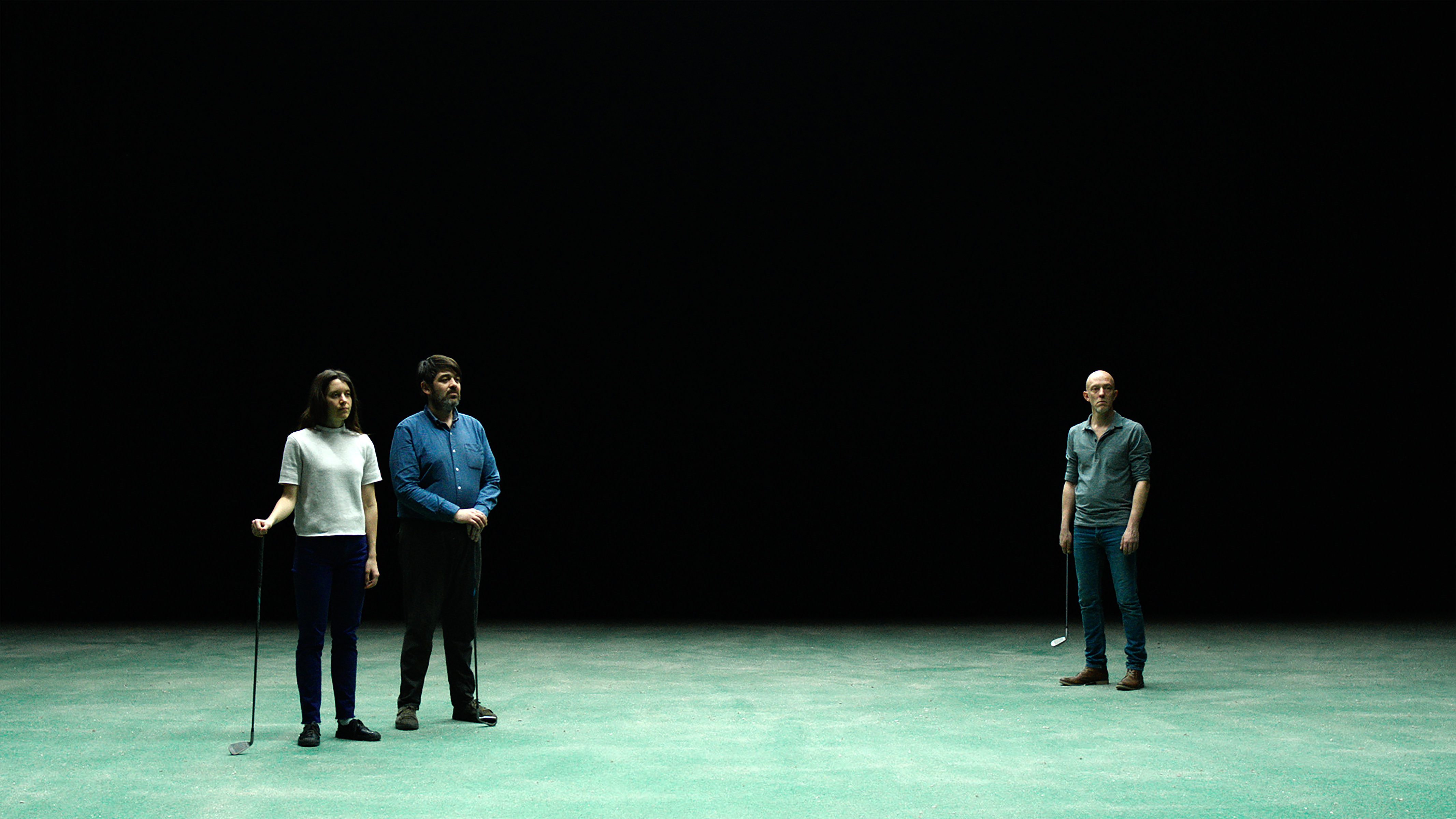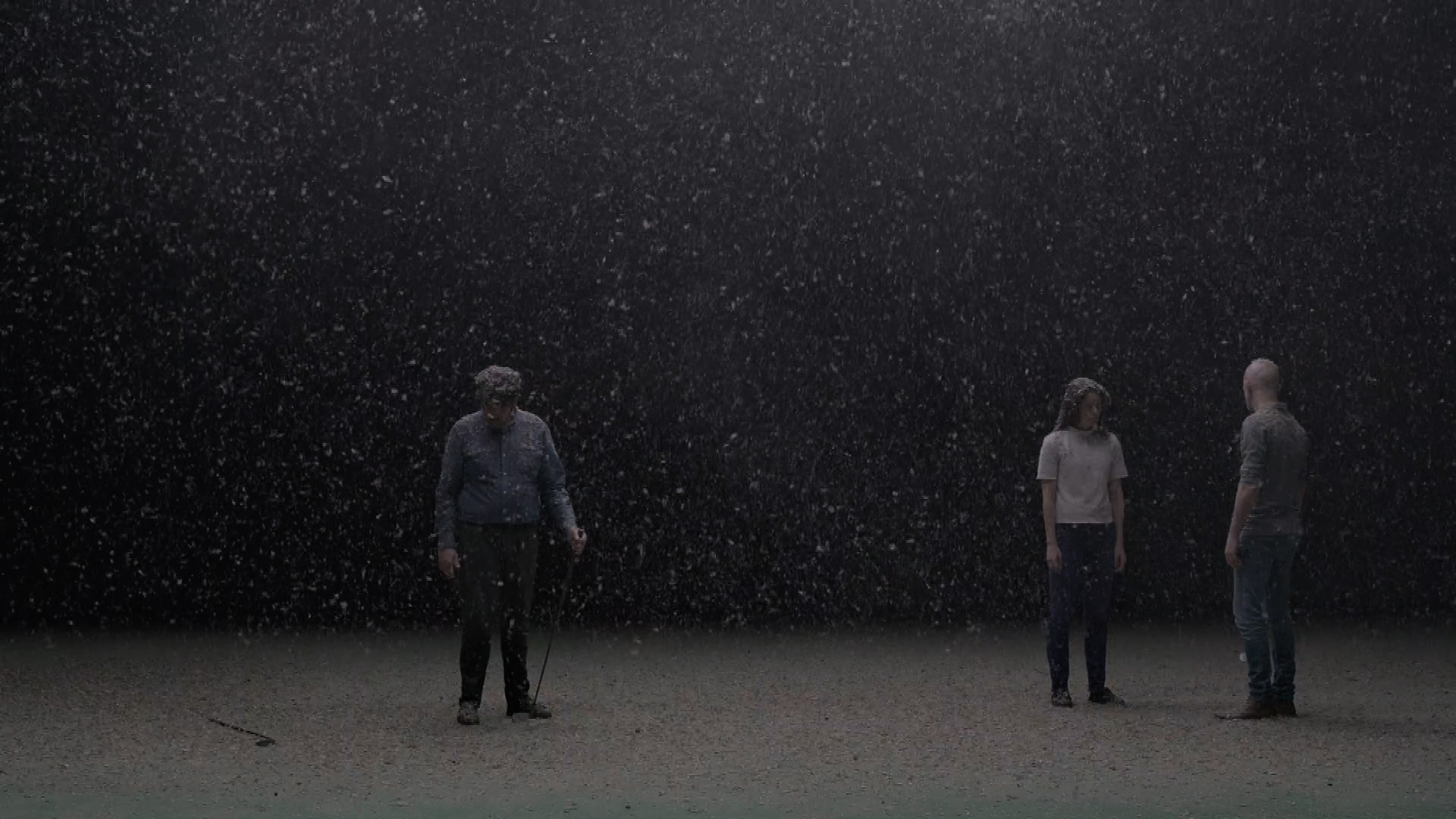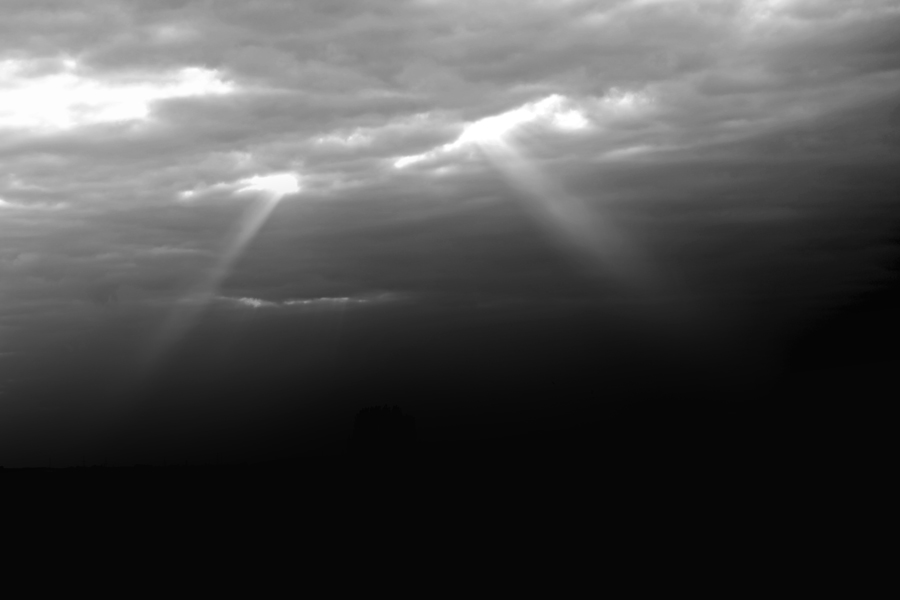video, 28'37'', life-sized projection
In this video work Karl Van Welden investigates the effect of a disaster on the human body. People in a state of carelessness until a dark ash rain falls upon them, turning their idyll into a catastrophe. Or how a blissful moment becomes a scene of charred bodies on a patch of scorched earth.
The choreography and movements are inspired by archaeological finds from Pompeii and Herculaneum, which literally show the positions of bodies at the moment of a catastrophe. After the eruption of the Vesuvius volcano, its victims were enclosed by ashes. In time, the bodies disintegrated while the ash surrounding them solidified, creating cavities. Italian archaeologist Giuseppe Fiorelli filled these cavities with plaster, creating a very precise image of the victims of this natural disaster. They remind us of the marble figures on medieval tombs. Sleeping beauties and tormented bodies, which reflect the Eros and the Thanatos of our relationship with the end.
Concept | Direction: Karl Van Welden - Director of photography: Tom Callemin - Dramaturgy: Bart Capelle | Isabelle Stockmans - Performers: Stefaan Claeys | Siet Raeymaekers | Steve Salambier - Machinery: Maarten De Vrieze - Production: United Planets | wpZimmer - Coproduction: Concertgebouw Brugge | C-TAKT | Workspacebrussels - Supported by: Internationaal Kortfilmfestival Leuven | Scenaristengilde | Eye Lite | PACT Zollverein
video, 28'37'', projectie
In het videowerk IMAGES FOR MARS II onderzoekt de kunstenaar de impact van een ramp op het menselijk lichaam.We zien mensen in een staat van zorgeloosheid, totdat een duistere asregen op hen neerdaalt, waardoor hun idylle verandert in een catastrofe. Of hoe een zaligmakend moment verglijdt tot een beeld van verkoolde lichamen op een stuk verschroeide aarde.
Karl Van Welden liet zich inspireren door beelden van de archeologische vondsten van Pompeii en Herculaneum, die letterlijk tonen welke houdingen de lichamen op het moment van de ramp aannamen. Na de uitbarsting van de Vesuvius, omsloot de as de slachtoffers. Op termijn vergingen de lichamen en werd de as eromheen hard, zo ontstonden er holtes. De Italiaanse archeoloog Giuseppe Fiorelli vulde de holtes met gips, en creëerde zo een heel precies beeld van de slachtoffers van de natuurramp. Ze doen denken aan de Europese middeleeuwse grafkunst. Slapende schoonheden en getormenteerde lichamen die de Eros en de Thanatos van onze relatie met het einde weerspiegelen.








